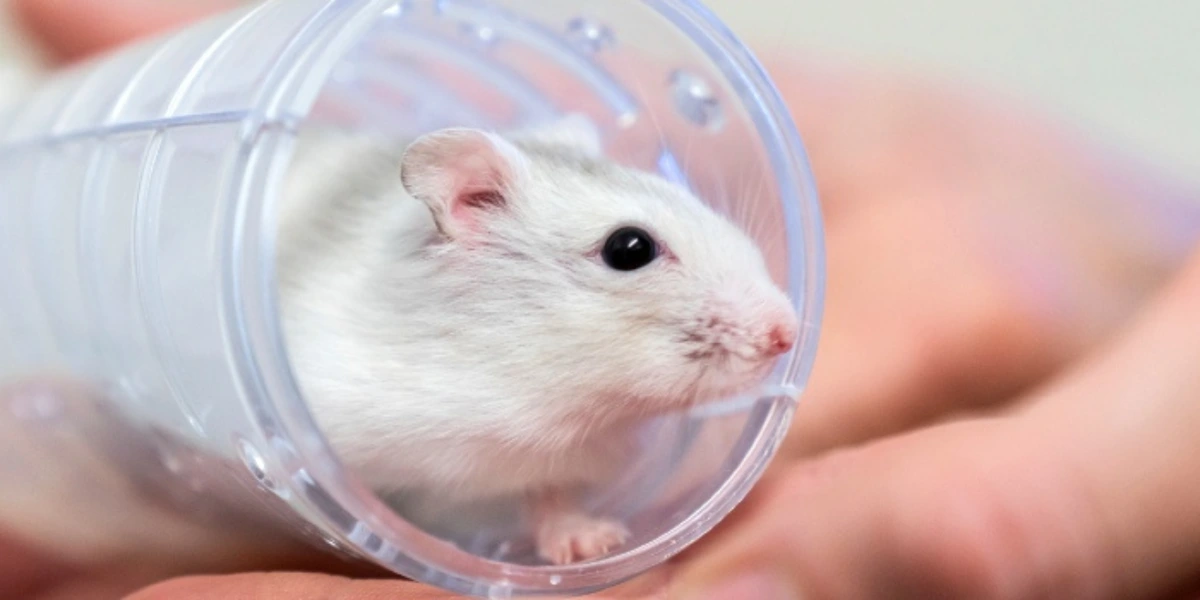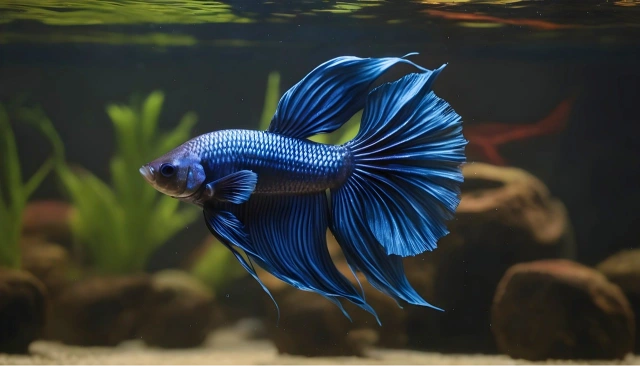Table of Contents
ToggleAre you tired of your hamster running amok and ignoring your commands? Do you dream of a well-behaved, trainable little fur ball that can perform tricks and respond to your cues? Look no further because I will delve into the fascinating world of basic hamster training steps in this article.
Whether you’ve just adopted a new furry friend or have struggled to connect with your current pet, these simple yet effective techniques will revolutionize how you interact with your tiny companion.
Understanding Your Hamster’s Personality
Understanding your hamster’s personality is essential for building a strong bond with your tiny furry friend. While some hamsters may be adventurous and curious, others might be shy. Observing their behavior in various situations can give you valuable insights into their unique traits and preferences.
By understanding their personalities, you can tailor their environment, playtime activities, and basic training steps to suit their needs. Regarding basic hamster training steps, adapting your approach based on your hamster’s personality is crucial.
For instance, a more confident and outgoing hamster might take quickly to new tricks or activities, while a reserved one may require more patience and gentle encouragement. By recognizing these individual differences, you can create a positive learning experience for your pet that aligns with their natural tendencies.
Creating a Positive Environment
Creating a positive environment for your pet hamster involves more than just providing the essentials. While it’s crucial to maintain a clean and comfortable habitat, integrating basic training steps can significantly enhance the overall well-being of your furry friend.
By incorporating reward-based techniques and offering mental stimulation, you can create an enriching and positive atmosphere that promotes your hamster’s instincts. Start by introducing simple commands like come or stay, using treats as favorable reinforcement.
This will build trust between you and your hamster and provide mental stimulation, which is essential for their overall happiness. Additionally, incorporating toys and activities, such as obstacle courses or puzzle feeders, will keep them engaged and minimize stress or boredom in their environment.
Regular Exercise
Regular exercise is essential for the overall well-being of hamsters. you can promote their physical health and mental stimulation by providing them with opportunities to run on a wheel or explore their surroundings. Understanding basic hamster training steps and guidelines can help owners create a safe and enriching environment for their furry companions.
Hamster care goes beyond providing food and water and creates a conducive space for exercise and play. Observing hamster behaviour during exercise sessions can provide insights into their preferences and needs.
Hand Taming
Hand-taming an anxious hamster can be a gentle and rewarding process. Start by creating a positive association between your hand and the hamster’s space, using treats to encourage them to approach you without fear. Over time, try placing your hand in the cage, allowing the hamster to investigate at their own pace.
Gradually introduce light touches and rewards for calm behavior, reinforcing trust and comfort. Remember, patience is vital in this delicate bonding process. As you progress with basic hamster training, observe your pet’s body language; subtle cues like relaxed ears or grooming behaviors can indicate increasing trust. Avoid forcing interactions or moving too quickly, which may provoke anxiety and hinder progress.
By respecting your hamster’s boundaries and building a foundation of trust through positive reinforcement, you can establish a strong bond that benefits you and your furry companion in the long run.
Target Training
As a vet, I know target training is a fundamental aspect of hamster training that offers a variety of benefits for both the pet and its owner. The process involves using positive reinforcement techniques to teach the hamster to touch or follow a specific target, such as a stick or your hand.
To begin target training, starting with basic steps such as presenting the target item to the hamster and rewarding them with a treat when they interact with it is crucial. As they become accustomed to this interaction, they gradually introduce more complex movements and distances for them to follow the target.
Understanding that each hamster’s unique learning pace and style will significantly contribute to successful target training outcomes. By approaching this aspect of training with patience and consistency, owners can foster an enriched environment for their tiny companions while strengthening their bond.
Litter Training
Litter training for hamsters is a crucial aspect of their care, as it helps maintain cleanliness and hygiene in their environment. While it seems daunting, hamsters can be litter-trained by using their instincts.
One effective method is to place some soiled bedding or droppings in the desired litter area to encourage them to use it. By consistently placing fresh bedding in the litter box and removing any waste from other regions, hamsters can quickly learn where to go.
Another critical aspect of litter training is choosing the right type of litter. Opt for safe and absorbent materials, such as paper-based or pelleted litters, while avoiding dusty or scented options that could harm your pet’s respiratory system.
Regularly cleaning the litter box and replacing the contents will help maintain a clean and odor-free living space for your furry friend.
Interactive Toys and Games
Interactive toys and games have revolutionized how we engage with pets, offering endless opportunities for fun and learning. From high-tech electronic toys to traditional puzzles, these interactive options stimulate a pet’s mind and body, creating a dynamic environment for play.
With the rise of remote-controlled gadgets and augmented reality games, pet owners can now connect with their furry friends in new and exciting ways, promoting bonding and mental stimulation. One overlooked benefit of interactive toys is their role in basic hamster training steps.
By incorporating interactive toys into training routines, hamsters can develop problem-solving, agility, and obedience skills. Furthermore, it provides a stimulating environment that can prevent boredom-related behaviors in hamsters, ensuring their overall well-being.
Conclusion
In conclusion, basic hamster training is achievable and rewarding for the pet and its owner. By implementing positive reinforcement techniques, consistent repetition, and patience, hamsters can be taught a variety of simple commands and behaviours.
Whether it’s litter training, teaching them to come when called, or even performing tricks, exercise can strengthen the bond between you and your furry friend while providing mental stimulation for the hamster.
Understanding your hamster’s personality and needs is crucial to successful training. With dedication and time, anyone can train their hamster to be a well-behaved and happy companion.
FAQs
1. Q: Can hamsters be trained to do tricks?
A: With patience and consistency, hamsters can be taught simple tricks like spinning in a circle or standing on their hind legs.
2. Q: How long does it take to train a hamster?
A: Training time varies, but most hamsters can learn basic commands within a few weeks of consistent training.
3. Q: What are some essential training tools for hamsters?
A: Treats, a clicker, and a small target stick are valuable tools for training your hamster.
4. Q: Are all hamsters trainable?
A: While some hamsters may be more receptive to training than others, almost all can learn some basic behaviours with the right approach.
5. Q: What are the best methods for potty training a hamster?
A: Place litter in one corner of the cage and consistently move any droppings into that spot until your hamster learns to use it as a bathroom area.
6. Q: Can you train a hamster to walk on a leash?
A: It is possible to train some hamsters to walk on a leash using gradual acclimation and positive reinforcement techniques.

Dr. Usman Bajwa, a dedicated veterinarian with a passion for pets, brings years of expertise to the world of pet grooming. Through his blog, he shares valuable insights and practical tips to help pet owners provide the best care for their furry companions. With a focus on promoting the health and happiness of pets, Dr. Usman articles offer easy-to-follow guidance on grooming techniques. When he’s not writing, you can find him at his clinic or enjoying time with his own beloved pets.




